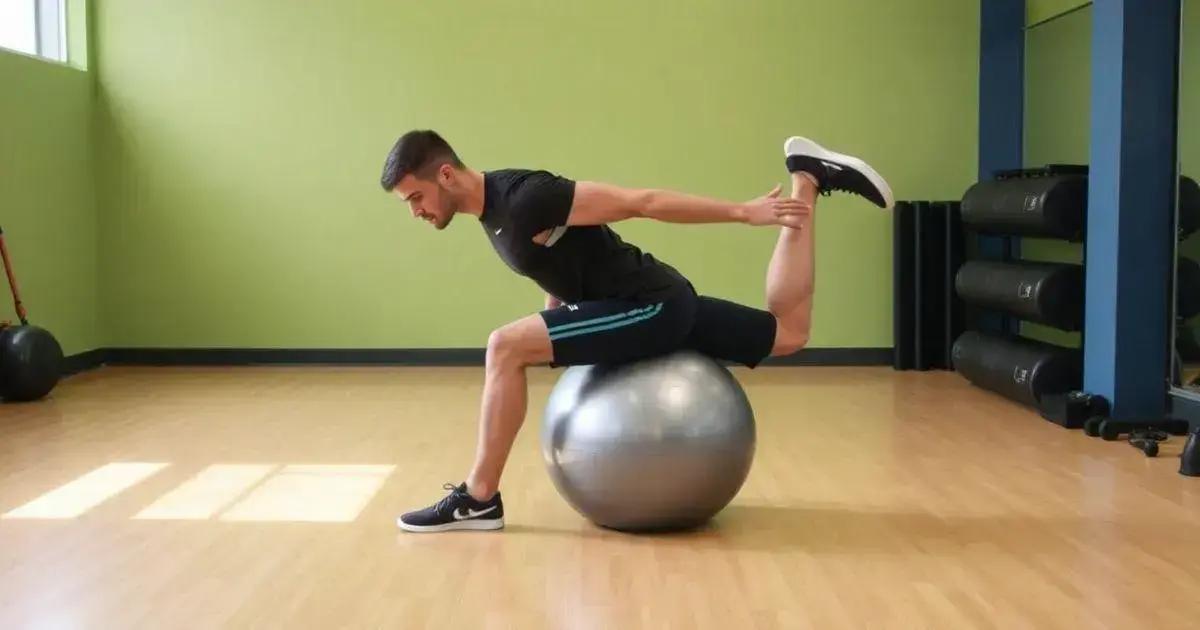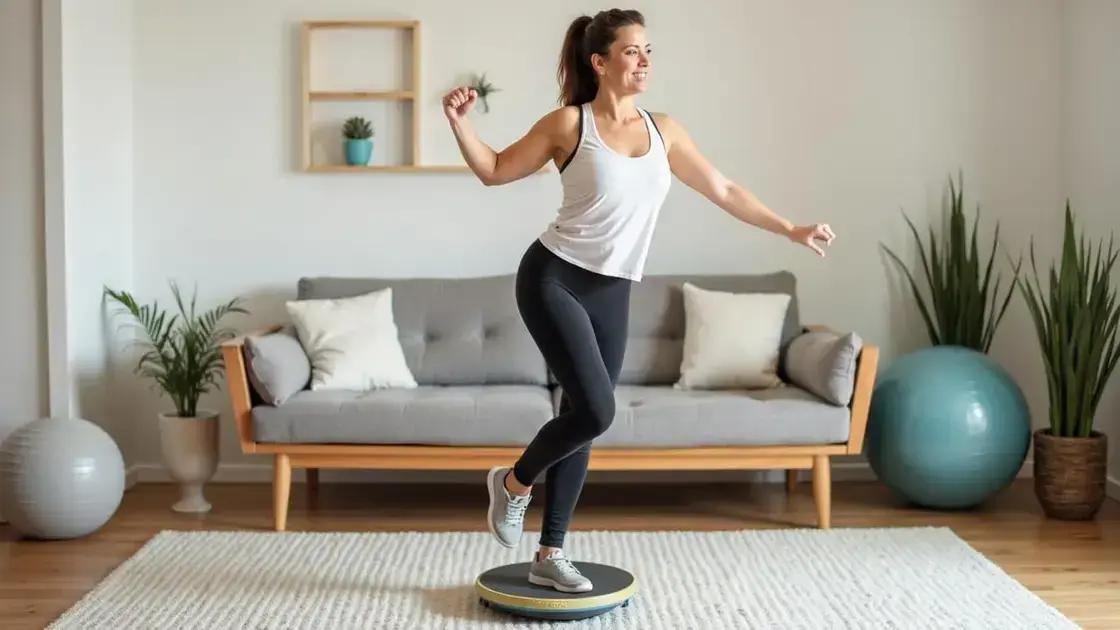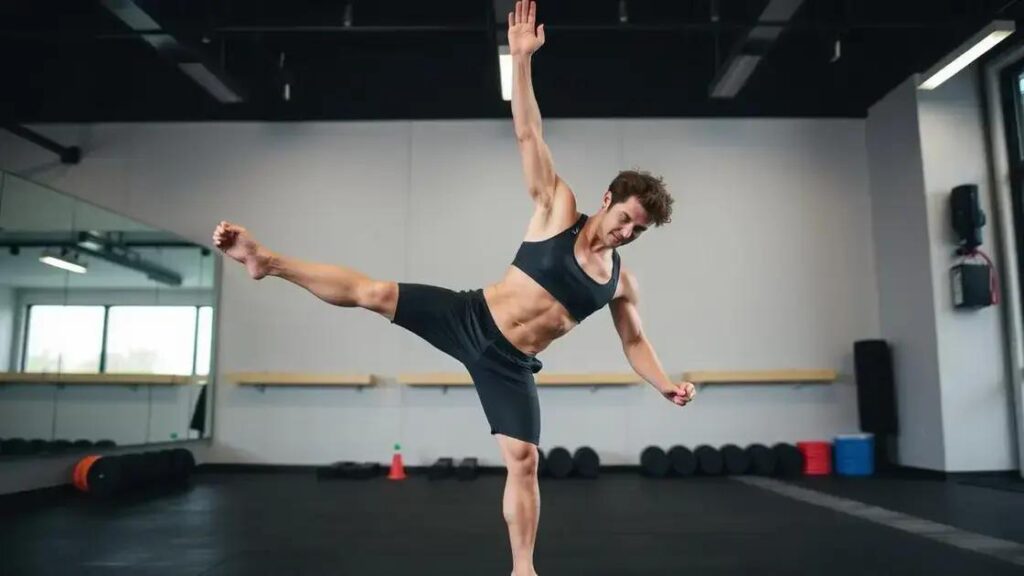Dynamic balance training involves exercises that enhance stability and coordination, reducing the risk of injuries and improving athletic performance. Key exercises include single-leg stands, stability ball roll-outs, and dynamic lunges, which can be incorporated into your routine by scheduling regular sessions and mixing them with existing workouts.
Dynamic balance training is essential for improving stability, coordination, and overall athletic performance. It involves exercises that challenge your balance by engaging multiple muscle groups and enhancing proprioceptive abilities. In this article, we will delve into the fundamentals of dynamic balance training and its numerous benefits, explore effective exercises, and provide tips on how to seamlessly incorporate this training into your daily routine.
Understanding Dynamic Balance Training

Dynamic balance training is an essential aspect of physical fitness that focuses on the ability to maintain control of the body’s position during movement. This form of training often involves engaging in exercises that challenge your stability while working on strength, flexibility, and coordination concurrently.
Dynamic balance training develops the body’s proprioception—the awareness of body position and movement in space. This is crucial for athletes, as well as individuals participating in everyday activities, to prevent falls and injuries.
Key Elements of Dynamic Balance Training:
- Movement: Unlike static balance training, which focuses on holding a position, dynamic balance requires movement through space and overcoming disturbances.
- Muscle Engagement: It activates various muscle groups simultaneously, allowing the body to respond and adjust to shifting weights.
- Coordination and Agility: Enhances overall coordination and agility, which are vital for various sports and physical activities.
Types of Exercises:
Dynamic balance training can include a variety of exercises, such as stability ball activities, agility drills, or using balance boards. These exercises can be tailored to match individual fitness levels and goals.
For instance, a simple exercise might involve standing on one leg while gently moving the other leg in different directions. This not only challenges your balance but also engages your core muscles and improves stability.
Benefits of Dynamic Balance Training

Dynamic balance training offers numerous benefits that enhance overall physical fitness and well-being. One major advantage is improved stability, which is essential for athletes and everyday activities. By enhancing stability, individuals can perform movements with greater efficiency and reduce the risk of falls and injuries.
Enhances Proprioception: Participating in dynamic balance training sharpens your proprioception—the body’s ability to sense its position and movement. This is crucial for all physical activities, from sports to walking on uneven surfaces.
Increases Athletic Performance: Athletes who incorporate dynamic balance into their training see benefits in coordination, agility, and overall performance. This training prepares them for the rapid changes in direction and speed that occur in most sports.
Strengthens Muscles: Many dynamic balance exercises engage multiple muscle groups. This not only strengthens the core but also improves the overall muscle tone and endurance. As muscles adapt and grow stronger, they become better at supporting the body during varied physical activities.
Reduces Injury Risk: By developing balance and stability, dynamic balance training helps prevent injuries related to falls or missteps. Improved balance aids in safely navigating different terrains and reduces the chance of joint injuries during physical exertion.
Boosts Confidence: As individuals improve their balance and coordination, their confidence in physical activities also grows. This newfound assurance encourages consistent exercise participation and helps maintain an active lifestyle.
Exercises for Dynamic Balance

Incorporating dynamic balance exercises into your routine can significantly improve your stability and coordination. Here are some effective exercises to consider:
1. Single-Leg Stand
Stand on one leg while keeping your other leg slightly bent at the knee. Hold this position for 30 seconds, gradually increasing the time as you become more stable. To intensify the exercise, try closing your eyes or standing on an uneven surface.
2. Balance Beam Walk
Use a balance beam or a line on the floor. Walk straight along the beam, focusing on keeping your balance. Aim to walk forward and backward. This exercise helps refine your balance while engaging your core muscles.
3. Stability Ball Roll-Outs
Start in a kneeling position, placing your hands on a stability ball. Roll the ball forward while slowly extending your body. Pause when your arms are fully extended and pull back to the starting position. This exercise engages your entire core and enhances balance.
4. Lateral Leg Raises
Stand straight and lift one leg out to the side while balancing on the other. Hold for a few seconds before lowering it back down. Repeat on the opposite side. This will strengthen your hip muscles and improve lateral stability.
5. Bosu Ball Squats
Using a Bosu ball, stand with your feet shoulder-width apart. Perform a squat while balancing on the flat side of the Bosu. This dynamic movement challenges your stability and strengthens your legs and core.
6. Dynamic Lunges
Step forward into a lunge and then return to standing. Repeat the lunge motion, alternating legs. To increase difficulty, reach your arms overhead as you lunge. This engages your entire body while improving balance.
By integrating these exercises into your regular routine, you can enhance your dynamic balance and overall fitness.
Incorporating Balance Training into Your Routine

Incorporating balance training into your routine can be simple and enjoyable. Here are some effective methods to consider:
1. Start Slow
Begin with short balance training sessions. Even 5 to 10 minutes a few times a week can make a difference. Gradually increase the duration as you become more comfortable with the exercises.
2. Schedule It
Set specific times in your week for balance training, just like you would for any workout. Consistency is key. Adding it to your calendar will help you stay committed.
3. Mix It Up
Combine balance exercises with your existing workouts. Try adding a few balance moves at the end of your regular routine or integrate them into your warm-up or cool-down. This keeps things interesting and effective.
4. Use Simple Tools
Utilize tools like stability balls, balance boards, or Bosu balls. These can add variety and challenge to your workouts while enhancing your balance. You don’t need a gym; you can do many exercises at home.
5. Incorporate Everyday Movement
You can practice balance during daily activities. For example, when brushing your teeth, switch to a single-leg stance. This sneaks in balance training without taking extra time.
6. Track Your Progress
Keep a journal of your workouts. Note the exercises you do and how long you can hold positions. Tracking your progress keeps you motivated and helps you see improvements over time.
7. Find a Workout Buddy
Working out with a friend can make balance training more enjoyable. You can motivate each other, try new exercises, and ensure safety during workouts.
By following these tips, you can seamlessly incorporate balance training into your routine, enhancing your stability and overall fitness.
Embracing Dynamic Balance Training for a Healthier You
Incorporating dynamic balance training into your fitness routine offers a wide range of benefits. Not only does it enhance stability and coordination, but it also helps reduce the risk of injuries while boosting overall athletic performance.
By understanding the principles of dynamic balance training and integrating effective exercises, you can significantly improve your physical capabilities. Make it a priority to schedule regular sessions, mix in balance activities with your current workouts, and track your progress for continued motivation.
Remember, balance training doesn’t need to be complicated. Simple adjustments to your daily routine can lead to substantial improvements. So, get started today and unlock the potential of dynamic balance training for a stronger, healthier lifestyle.
FAQ – Frequently Asked Questions about Dynamic Balance Training
What is dynamic balance training?
Dynamic balance training involves exercises that improve stability and control while moving, helping individuals maintain balance during various activities.
What are the benefits of dynamic balance training?
Benefits include improved stability, enhanced coordination, injury prevention, increased athletic performance, and boosted confidence in physical activities.
How often should I practice balance training?
Aim for at least 2-3 sessions per week, starting with short durations and gradually increasing as you become more comfortable with the exercises.
Can I do balance training at home?
Yes, many balance exercises can be done at home using minimal equipment, such as stability balls, balance boards, or even just your body weight.
What are some examples of dynamic balance exercises?
Examples include single-leg stands, balance beam walks, stability ball roll-outs, lateral leg raises, and dynamic lunges.
How can I incorporate balance training into my routine?
You can mix balance exercises with your regular workouts, set specific times for practice, and include balance movements in daily activities.












